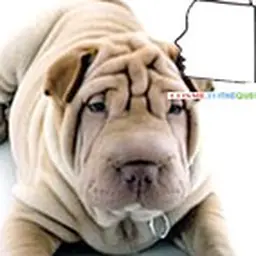
Some people think that beauty objects, what we now call beauty toys, are recent inventions. In fact, people have always been interested in how to maintain beauty with various and varied instruments. The Cosmetotheque proposes here a series of articles on this theme.
The engraving below dates from the late 19th century and attests to the ancient interest in beauty toys. She describes the bathroom of the"bathroom of the Modern Lady "In it we will recognize some elements that are flourishing at the present time. This painting was created in 1899 by the painter Jean-Marc Côté, in collaboration with other artists. It presents us the bathroom of the year 2000 seen at the time. With a minimum of imagination, we can distinguish some elements that could find their place nowadays, certainly in different forms, such as the connected brush, the intelligent mirror, the light, the cleaning brush, etc… but with the same principles.

Other objects or machines more rocambolesques the ones than the others will also see the day.
Beauty objects as we know them today actually appeared in the early 2000s. Many found their first applications in beauty salons or in professional routines that were relatively confidential and mostly reserved for the aesthetic world. These objects will undergo during these last 15 years a rather spectacular evolution. Personally, I became interested when regulations, particularly in the United States, began to take these new devices into consideration.
While there was a basic principle of cosmetics that was not to rush the skin," primum non nocere " as we said at the time, many of these techniques actually consist of stressing the skin to provoke a response that often manifests itself in improved skin conditions. Stress is generated in different ways. Moreover, this stress must be non-invasive, which means that the skin remains intact as long as its integrity is respected and that this consists in not intervening by cutting it or injecting substances into it, by physical means for example.
From the scientific point of view, some of these techniques have been subjected to studies leading more or less to their validation. But generally speaking, the tests are or have been conducted by the companies that have developed these techniques, which raises questions about the evaluator's independence. That being said, it is not for all that that some of them do not present quite interesting results, quite often competing with the traditional cosmetic products. As a result, the question of whether the cosmetic products of tomorrow will be more formulations in a package, or on the contrary more sophisticated devices, possibly connected and controlled by"intelligent" applications, remains a very open question.
One of the striking trends over the past 15 years has been a gradual shift from the institute or trade show to home use. Hence the importance of the regulatory issue. From this point of view, there were many discussions in the early years as to whether these devices were cosmetic regulation or some other approach. To date, they can be considered to fall under general product safety and must therefore comply with the provisions in force. Next, the claims and the product definition must be taken into account. Some experts consider that, according to the definition of cosmetic products*, as soon as these devices are applied to the skin to modify its appearance, they would be cosmetic products. But the mention"substance or mixture" in this definition other opinions are gradually moving towards other regulatory provisions depending on the product definition and claims, and in particular those describing medical devices. This question is still under debate and must be validated on a case-by-case basis.
In this series of articles, we will therefore focus only on home devices, i.e. devices that allow cosmetic procedures to be applied, usually directly, by the end user. It will also be a question of making an inventory of the technologies and scientific processes used rather than judging their comparative performance.
Finally, it should be noted that many devices combine these processes or technologies. Their number is practically unlimited. We will not describe them since they are combinations that do not or only slightly change the operating principles.
There are currently many technologies that can support these devices, but that can be summarized in a few classes of technological effects: - mechanical stress or stress, - ultrasound, - the light, - electricity, - radio frequencies, - electrolysis, - magnetism, - the cold.
To be continued!!!
*" A cosmetic product is defined as"any substance or mixture intended to come into contact with the superficial parts of the human body (epidermis, hair and capillary systems, nails, lips and external genitalia) or with teeth and oral mucous membranes, with the sole or principal purpose of cleaning them, perfuming them, modifying their appearance, protecting them, maintaining them in good condition or correcting body odours" (Article 2 of the Cosmetic Regulation and Article L.5131-1 of the Public Health Code) .
| Contribution made by Jean Claude Le Joliff A biologist by training, Jean Claude Le Joliff was a man of R&D for many years. Successively in charge of R&D, then of Research and Innovation in a large French group of cosmetics and luxury goods, and after an experience of setting up a research centre (CERIES), he turned to innovation management. He has also been an Associate Professor at the University of Versailles Saint Quentin (UVSQ) and remains in charge of courses in the framework of several specialized courses: ISIPCA, IPIL, ITECH, UBS, UCO, SFC, etc. He is the founder of inn2c, an R&D and innovation consulting company. Consultant for several international companies, he has actively participated in projects such as Filorga, Aïny, Fareva, and many others. He created the Cosmétothèque®, the industry's first conservatory of crafts and know-how. |













